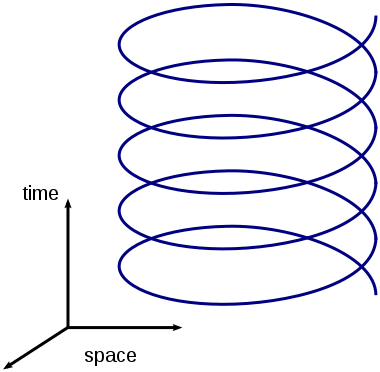Re: Internal pangs; grinding sand?
charles wrote:
Try the following.
Stand with feet hip width apart. Extend each arm to its respective side at shoulder height, palms facing down, fingers extended. Your arms form a T with your torso. Rotate your palms so that they face forward, arms still extended to the sides at shoulder height. Continue rotating them in that direction as far as you can so that they face upwards or even angled a little towards the rear. Keep your shoulders down. Feel the stretch and tension through the arms to the finger tips as a result of the twisting action. Feel the stretching across the chest (opening), the contraction across the upper back (closing). Feel the exertion necessary to maintain that position, that twist through the arms. Now, completely let them go and allows gravity to make your arms fall to your sides. As they do so, the arms naturally untwist, the palms slapping against the outside of your thighs, the chest and back relax. We'll call this twisting of the arms, rotation/spiralling in a negative direction. If you like fancy terms, this is an example of "shun chan si".
Stand with feet hip width apart. Extend each arm to its respective side at shoulder height, palms facing down, fingers extended. Your arms form a T with your torso. Rotate your palms so that they face towards your rear, arms still extended to the sides at shoulder height. Continue rotating them in that direction as far as you can so that they face upwards or even angled a little towards the front. Keep your shoulders down. Feel the stretch and tension through the arms to the finger tips as a result of the twisting action. Feel the stretch and tension through the arms to the fingers as a result of the twisting action. Feel the contraction across the chest (closing), the stretch across the upper back (opening).Feel the exertion necessary to maintain that position, that twist through the arms. Now, completely let them go and allows gravity to make your arms fall to your sides. As they do so, the arms naturally untwist, the palms slapping against the outside of your thighs. We'll call this twisting of the arms, rotation/spiralling in a positive direction. If you like fancy terms, this is an example of "ni chan si".
You can chose whatever words you want to describe the sensations and feelings or the specific anatomy involved. Doing so doesn't change the physical action. If you can't do the physical action - or never try to do it - whatever words you chose don't mean very much. This type of extension, twisting, exertion followed by retraction, untwisting, letting go/relaxation should be in every movement in Taijiquan. Without the stretch, twisting and exertion, there is no retraction, untwisting and relaxation possible and vice versa.
charles,
It seems what you've described is more about winding rather than spiraling. Doesn't the kua movement come into picture if you are talking about spiraling?
.

